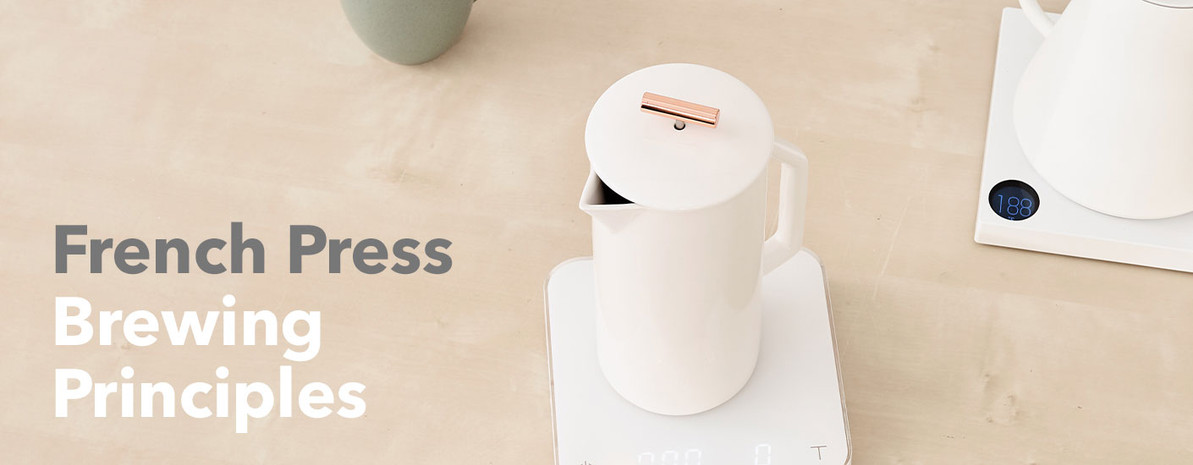Understanding Coffee Brewing with Your French Press
How to brew with your french press, using an explanation of extraction, strength, and the variables you can use to make better coffee.
There aren’t many purer representations of the wonders of full-immersion coffee brewing than the french press. Resulting in big body and rich flavors, the brewer’s simple design obscures the more complex process happening inside—the interaction of ground coffee, water, and time all work together and, with your influence and know-how, produce a drink suitable for even the most discerning coffee drinker. This article is made to take you beyond simply having a recipe that you use every day, and instead will propel you into understanding how you can influence extraction and strength in your mug and brew up the perfect cuppa joe with any bag of beans you like.
If you haven’t already, check out our Basic Brewing Principles guide where we detail the fundamentals of good coffee, good water, and good recipes. Or, if you’re interested in these concepts in a general sense instead of specifically for your french press, take a gander at our Intermediate Brewing Principles. If you're on the market for a french press, make sure to check out our Comparison of French presses.
Brewing is Extraction
Whether by immersion or percolation, brewing coffee is actually the process of extraction. A series of physical and chemical interactions are set in motion when you mix coffee and water, starting with washing insoluble materials from the surface of your bed of coffee grounds and quickly moving into dissolving soluble flavor compounds from inside of those coffee particles. All of this material, both soluble and insoluble, contributes to your resulting cup of coffee—those coffee oils and superfine particles that were washed from the surface of your coffee grounds will help define the body and texture of your beverage, while the combination and ratio of dissolved flavor compounds will determine the flavor of your fresh brew.
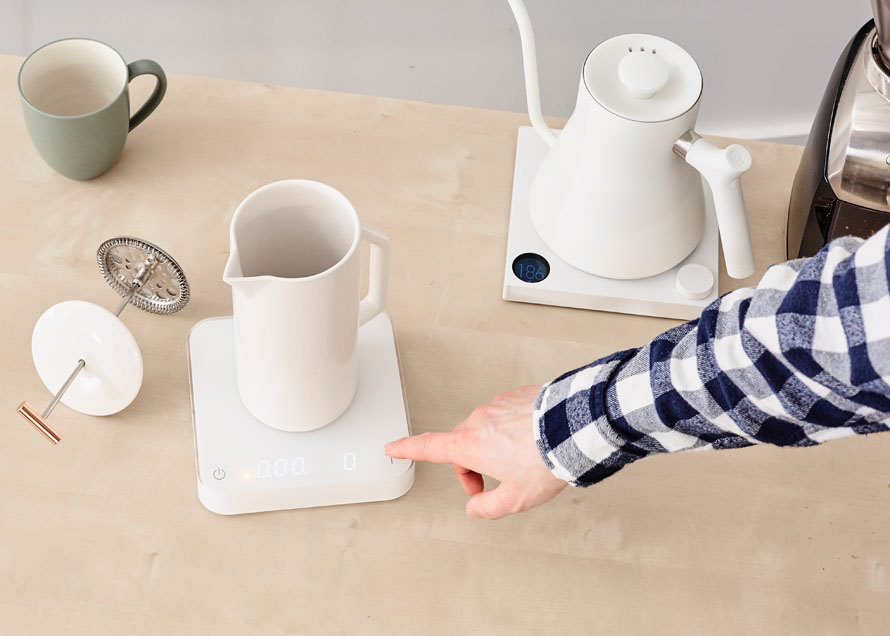
The concentration and mixture of different compounds that end up in your brewed coffee will change constantly throughout the extraction process—this will always be the case because we know that different chemical compounds in your roasted coffee (like organic acids, simple sugars, and more complex carbohydrates) all dissolve and extract at different but predictable rates. This means that in the earliest stages of brewing in your french press you can expect the beverage to be sharp, dilute, and acidic in flavor, growing more balanced over time until eventually extracting astringent compounds and taking on some characteristics that we associate with “over-extraction”. This predictability in the extraction rates of different flavors gives us a way to have some influence over what our brewed coffee tastes like, as well as giving us a baseline to be able to assess our extraction as either under-extracted (we removed too little of the soluble material), over-extracted (we removed too much of the soluble material), or ideally extracted (we removed just the right amount of the soluble material).
How to Judge Your Extraction
There are lots of ways that you could try to assess how your brew went, and if you look for very long at the science of brewing you’ll come across all kinds of measurements, numbers, and formulas made to inform that assessment. Though quantitative data can be a helpful way to communicate precise information from one person (with the necessary tools to measure and understand the measurement) to another person (with the same tools and understanding), any coffee professional should be able to tell you that you don’t taste numbers, measurements, or extraction percentages, you taste coffee! Since we know that the flavors in our mug are influenced by the relative extraction we achieve, how do we know if our brew is over-extracted, under-extracted, or just right? By taste! There are some flavors that tend to consistently come through at different levels of extraction that you can look out for as you’re learning to dial in your recipes.
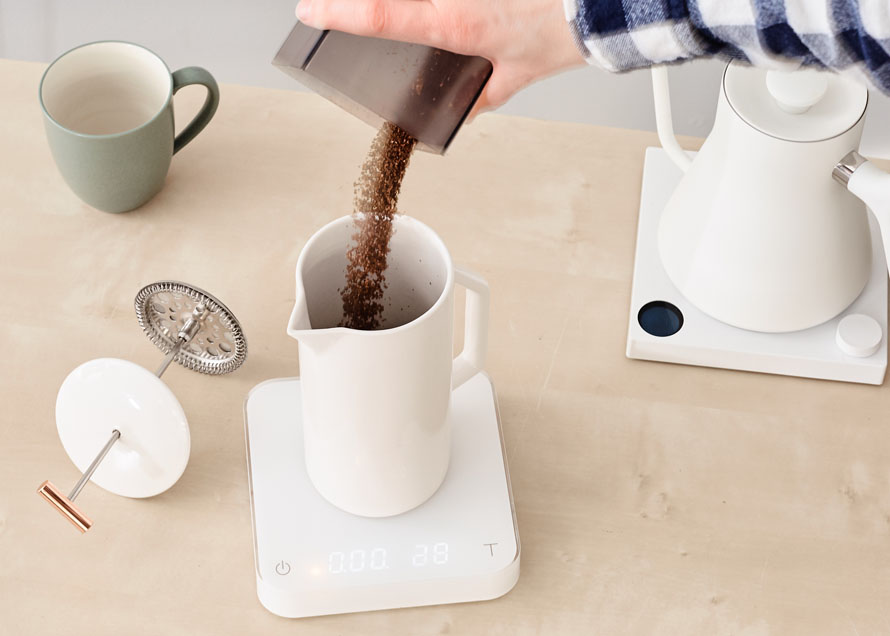
Under-extracted coffee will likely taste sour, salty, or overbearingly acidic. The early stage of extraction contains most all of the acids that will be extracted, as well as some bitter compounds (like caffeine) that can be overwhelming when left unbalanced by the flavors that will extract later in the brew.
Over-extracted coffee will likely taste bitter and feel unpleasantly astringent. Many of the flavors extracted late in a brew are bitter in taste, pushing the flavor balance in that direction quickly.
Ideally extracted coffee should be balanced and flavorful, achieving both a satisfying texture and an acidity that complements the flavors of your brew. This can mean sweet and brimming with fruit flavors, deep and rich with chocolatey goodness, or complex and alluring with savory complexion.
If you’re not a confident taster right now that’s totally okay! Tasting is a skill you can learn, and with a little trial and error you’ll be able to start judging your extraction accurately enough to make educated decisions about how to adjust your recipe for a better brew.
The Importance of Strength
An ideally extracted dose of coffee is the first goal in brewing, but ensuring that you brew coffee with good strength is a very close second. Our ability to taste coffee well relies on the concentration of its flavors being just right—too much flavor in solution and our taste buds become overwhelmed, while too little flavor will leave a beverage to come across as dilute and disappointing.
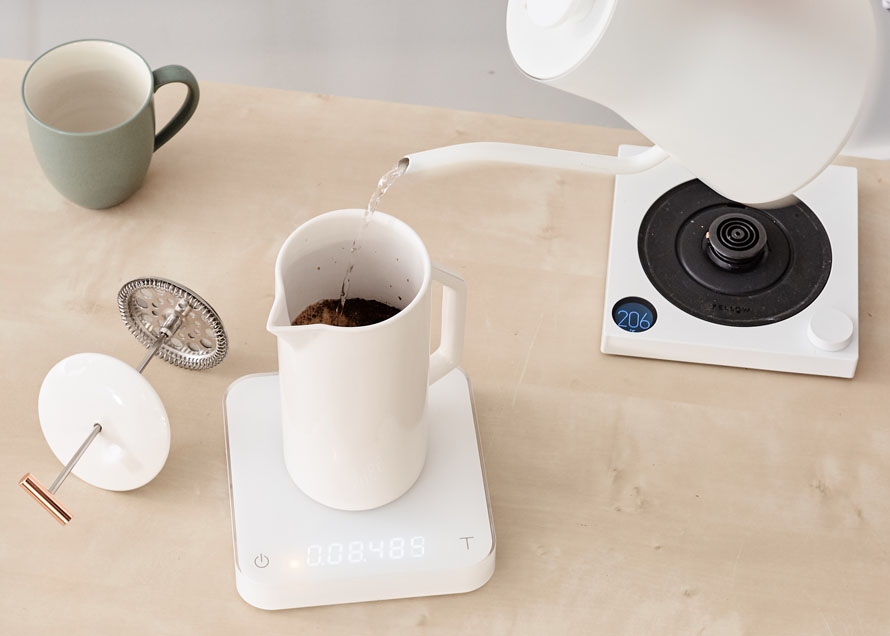
The balance of strength and extraction in your press pot can get especially interesting because the wire mesh filter used in most french presses allows a much greater volume of insoluble material (oils and fines) to end up in your brew. These insoluble materials contribute little flavor but add lots of weight to the body of your brew, which in turn makes it more difficult to taste flavors clearly. Ultimately, this means that in order to achieve a similar level of flavor clarity as in a paper-filtered brew you’ll need to brew coffee the results in a higher overall strength, making it possible to discern the flavors in your brewed coffee through the veil of the heavy body that your brewer excels at producing.
With a dose, grind setting, and brew time all within a typical range for immersion brewing, it’s pretty straightforward producing coffee at a palatable strength with your french press. But, if you’re looking for more control over your new brewer, we’ll cover below the variables that you can adjust in order to fine-tune your recipe to brew up your ideal cup of coffee time and time again.
Mastering Your French Press
Learning to succeed with your french press is all about understanding how to tweak just a few variables in order to achieve the best extraction and strength for any bag of beans that you’ve got. So much of the beauty of immersion brewing is in its simplicity, meaning that more so than in any pour-over brewer you can focus strictly on these four inputs without worrying about other extraneous (and more difficult to manage) variables like pour stages, flow rate, channeling in the brew bed, and loads more.
Brew ratio is the amount of ground coffee and brew water you use to make a single extraction. Immersion brewers like the french press tend to perform better with a higher ratio of coffee to water than most pour over or auto brewers do, so I’d recommend starting at 1g of ground coffee per every 14 or 15g of water used. Extraction and strength will be affected greatly by this ratio—the more coffee you use the higher your strength will be and the lower your total extraction will be, and vice versa. Expect to make adjustments here to impact your total strength first and foremost, but typically finding a consistent ratio will help you learn to adjust the other variables with more precision quickly.
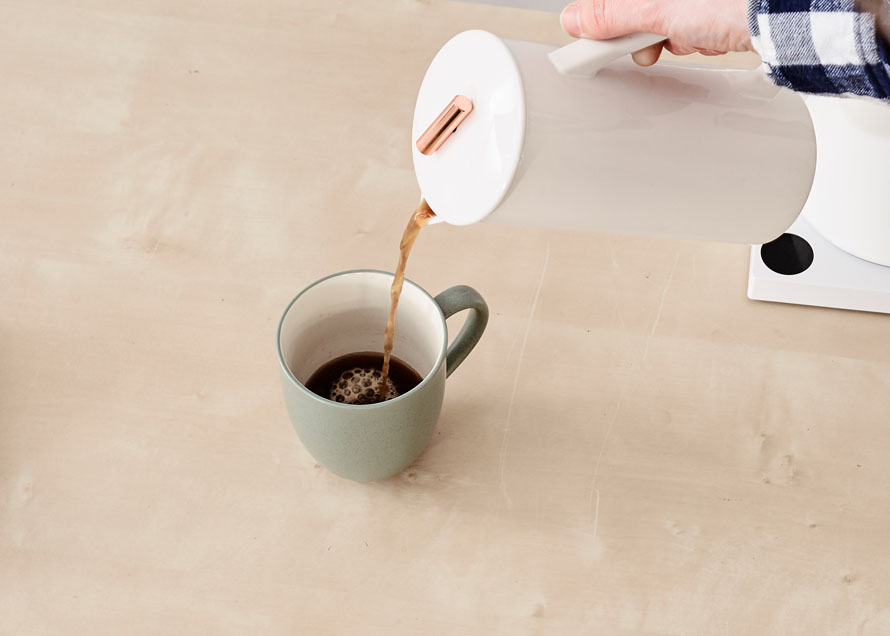
The grind setting that you choose will also greatly impact your total extraction by affecting the rate at which coffee flavor will dissolve and extract out of your grounds. The commonly accepted coarseness for french press has been “very coarse” for a long time now, but more and more lately loads of pros are recommending a setting closer to a standard drip grind. Regardless of which grind you decide to go with, be sure that it pairs well with your chosen contact time.
Many immersion brewers, like the french press, give you the ability to directly and consistently control your total contact time in a way that you can’t with pour over brewers. While you’ll always need at least a certain amount of time to reach an appropriate extraction level, it seems as though very long steep times are becoming more and more common (as evidenced by a couple of the links above). Whatever your process, remembering that more time always means more extraction will help you dial in how long you let your french press steep before either breaking the crust, depressing the plunger, or decanting the coffee.
The Temperature of your brew water is the final control variable, and it will relate directly to your rate of extraction (hotter water causing faster extraction and vice versa). The general standard for brewing says to use water 195°F–205°F (90.5°C–96°C), but there are lots of folks who prefer hotter or colder water for their own brews. Remember that your “temperature” isn’t necessarily the temperature in your kettle, but rather the temperature of the water throughout the brewing process in the brewer itself. Preheating your french press to aid in heat retention will be important no matter the design of your brewer, but it might behoove you to use a slightly higher temperature if your brewer is single-walled glass or metal as opposed to a double-walled or otherwise well insulated brewer.
Get Brewing!
All of the reading in the coffee world won’t make a difference without investing a little time into brewing and tasting, so get to it! Hopefully now with a little understanding of extraction and strength, guidelines for how to taste and assess your brew, and an overview of the variables you can adjust in your french press, you’re ready to dive in and make a little magic in the pursuit of the perfect mug of coffee.
Happy brewing, y’all.
